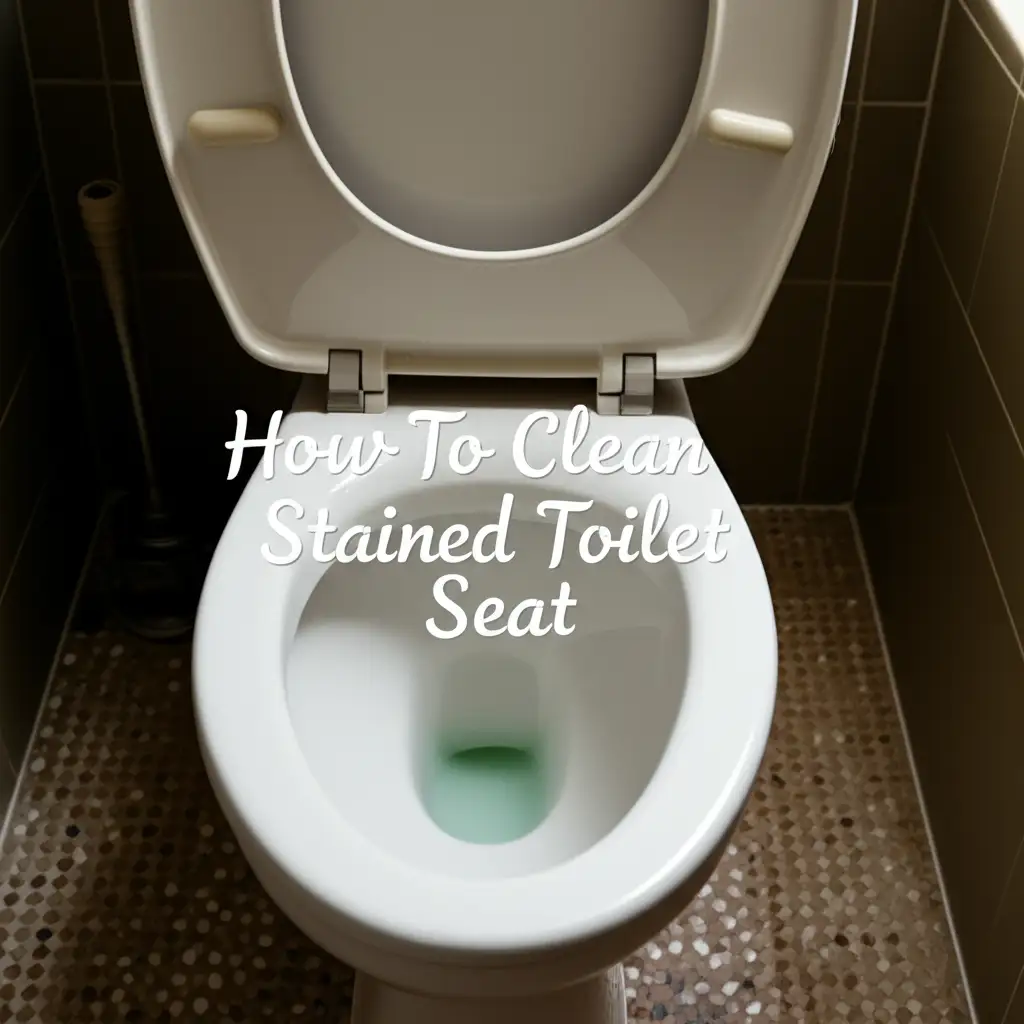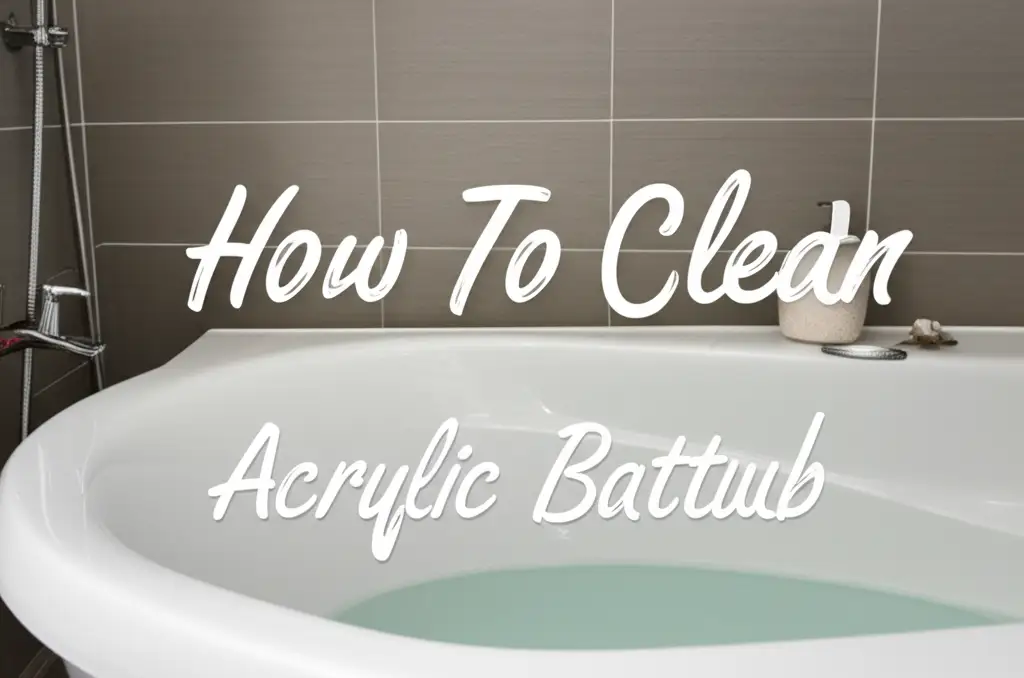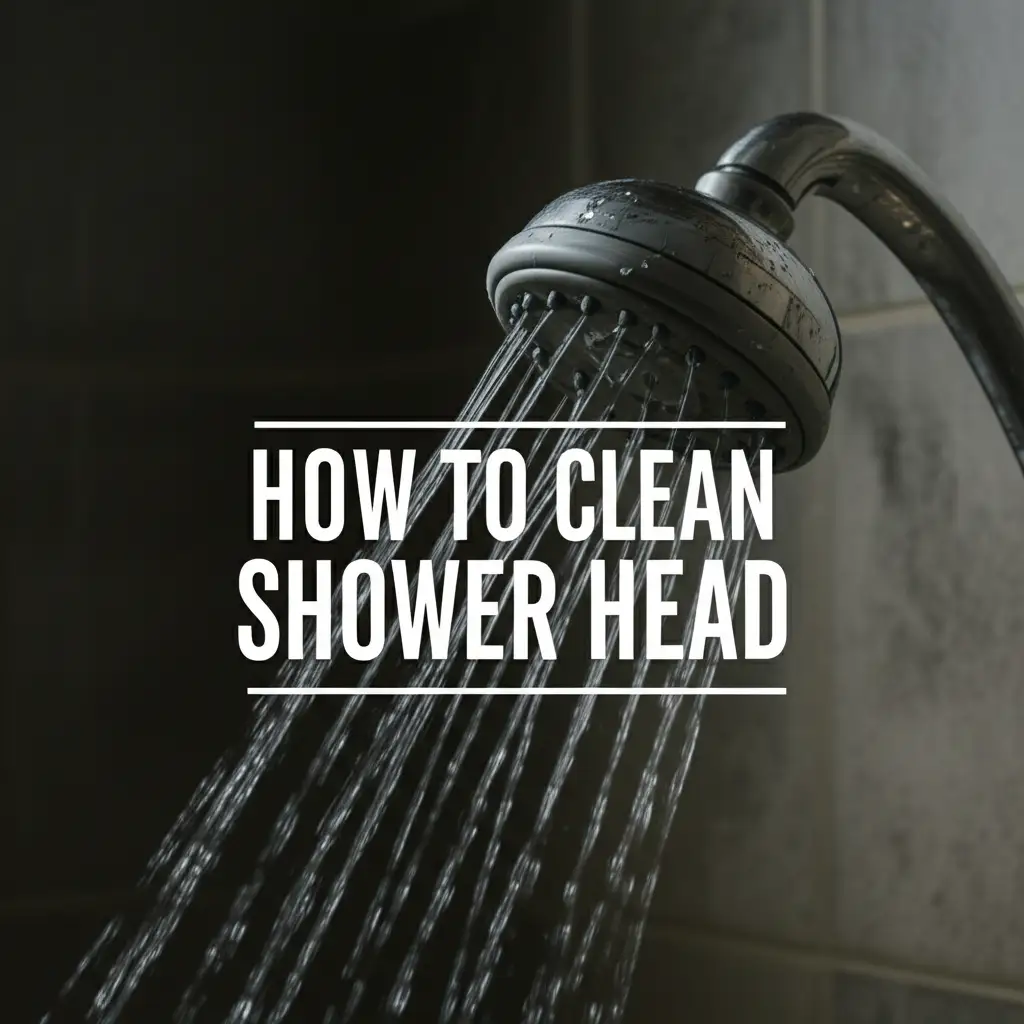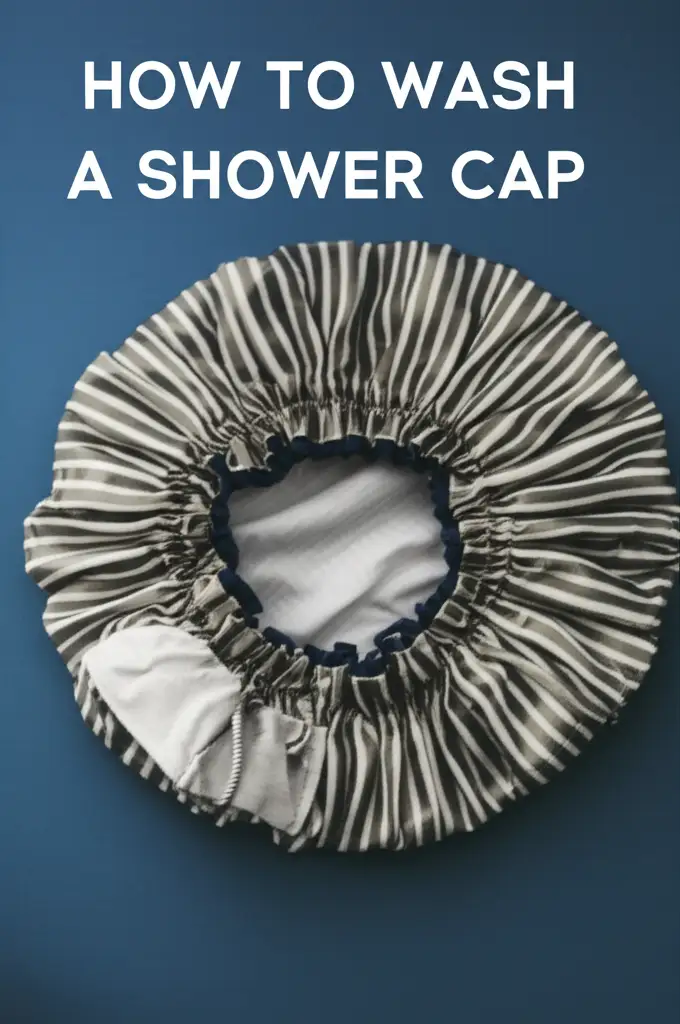· Bathroom Care · 14 min read
How To Clean Marble Countertops In Bathrooms

How To Clean Marble Countertops In Bathrooms: A Full Guide
Have you ever looked at your beautiful marble bathroom countertop and worried about keeping it clean? Marble adds elegance to any space. Yet, it also needs special care, especially in busy bathrooms. I understand how you feel; natural stone can seem tricky to maintain.
This guide will show you exactly how to clean marble countertops in bathrooms. We will cover everything from daily upkeep to tackling tough stains. You will learn about safe cleaning products and proper care routines. Get ready to make your marble shine without fear of damage.
Takeaway
- Use pH-neutral cleaners only.
- Wipe spills immediately.
- Protect marble with coasters and trays.
- Seal your marble regularly.
- Avoid acidic or abrasive products.
Cleaning marble countertops in bathrooms requires gentle, pH-neutral solutions and immediate attention to spills. Regular wiping with a soft cloth and proper sealing prevent damage. This keeps your marble looking elegant and new for years.
Understanding Your Bathroom Marble Countertops
Marble brings a touch of luxury to your bathroom. It is a natural stone, formed from crystallized limestone. Its unique veins and patterns make each piece special. Knowing its nature helps you care for it properly.
Marble is mostly calcium carbonate. This chemical makeup makes it sensitive to acids. Even mild acids can etch its surface. Etching looks like dull spots or rings.
In bathrooms, marble faces many challenges. Water, soap, toothpaste, and various beauty products often land on its surface. Many common bathroom cleaners are acidic. These can quickly harm marble if used incorrectly. This is why a specific cleaning method is important.
The Porous Nature of Marble
Marble is a porous stone. This means it has tiny openings across its surface. These pores can absorb liquids easily. Water, oil, and colored liquids can seep in. This leads to stains.
Porosity also means marble needs sealing. A good sealant fills these tiny pores. It forms a barrier. This barrier helps prevent liquids from soaking in. It protects against stains and etching.
Types of Marble Finishes and Their Cleaning
Marble often comes in two main finishes: polished and honed. Each finish has unique qualities. These affect how you should clean the surface.
Polished marble has a glossy, reflective surface. It is very smooth. This finish makes stains somewhat less likely to penetrate immediately. However, etching is more noticeable on polished marble. Etch marks appear as dull spots against the shine. You will need to be extra careful to avoid acidic spills.
Honed marble has a matte or satin finish. It does not reflect light as much. Honed marble feels softer to the touch. It is less prone to showing etch marks due to its non-reflective surface. However, honed marble is often more porous than polished marble. This means it can absorb spills more quickly. You must be diligent with immediate cleanup and sealing for honed marble.
Both finishes require pH-neutral cleaners. Never use abrasive scrubbers on either. Abrasives can scratch polished marble. They can also alter the texture of honed marble. Always use soft cloths. Gently wipe down your counters daily. This prevents buildup and preserves the finish.
Essential Tools and Gentle Cleaning Solutions for Marble
Proper cleaning begins with the right tools. Using the wrong items can damage your marble. For marble, less is more. Simple, gentle items work best. You do not need harsh chemicals.
You will need soft, non-abrasive cloths. Microfiber cloths are excellent choices. They are soft and absorb well. Avoid sponges with scrubbing pads. These can scratch the marble surface. A spray bottle is also useful for applying cleaning solutions evenly. Make sure it is clean before use.
Always use warm, distilled water. Tap water can contain minerals. These minerals might leave water spots on your marble over time. Distilled water ensures a streak-free clean. It prevents mineral buildup.
DIY Gentle Cleaners for Marble
For daily cleaning, a simple, pH-neutral solution is ideal. You can easily make one at home. Mix a small amount of mild dish soap with distilled water. Use only a few drops of soap. Too much soap can leave a residue.
- pH-Neutral Dish Soap Solution:
- Fill a spray bottle with warm, distilled water.
- Add 1-2 drops of pH-neutral dish soap.
- Gently shake the bottle to mix.
- This solution is perfect for everyday cleaning. It removes dirt and grime without harming the stone.
For tougher spots, you might use baking soda. Baking soda is a mild abrasive. It is also alkaline. This makes it safe for marble. You can make a paste with baking soda and water. Apply it to stains. This helps draw out discoloration.
What to AVOID When Cleaning Marble
This is perhaps the most important part of marble care. Many common bathroom cleaners are harmful to marble. Knowing what to avoid saves your countertops.
- Acidic Cleaners: Never use cleaners containing acids. This includes vinegar, lemon juice, ammonia, and many commercial bathroom cleaners. Acids react with calcium carbonate. This causes etching. Etching looks like dull, rough spots. It removes the shine from polished marble. It can also damage honed finishes.
- Abrasive Cleaners: Avoid scouring powders, steel wool, or harsh scrubbing pads. These materials scratch the marble surface. Scratches are very hard to repair. They dull the stone’s appearance. Stick to soft cloths and gentle scrubbing.
- Harsh Chemicals: Bleach is another chemical to use with extreme caution. While diluted bleach might be used for mold on some surfaces, it can be too strong for marble. It can dull the finish over time. Strong detergents or general-purpose cleaners often contain chemicals not suitable for natural stone. Always check product labels. Look for “safe for natural stone” or “pH-neutral.”
I always recommend doing a patch test. Before using any new cleaner on your entire countertop, try it in a hidden area. A small, inconspicuous spot, like under an overhang, works well. Apply a tiny amount. Let it sit for a few minutes. Then, wipe it off. Check for any discoloration or damage. This simple step can prevent big problems.
Daily and Weekly Cleaning Routines for Marble
Maintaining your marble countertop daily is key. Simple habits prevent big problems later. It takes only a few minutes. Regular care keeps your marble looking its best.
The most important daily step is wiping spills. Marble is porous. Liquids can soak in fast. Water, toothpaste, or makeup can stain quickly. Even plain water can leave hard water spots. Always clean up spills right away. Use a soft, dry cloth. Blot, do not wipe. Wiping can spread the spill.
After wiping spills, do a quick surface clean. Use your pH-neutral dish soap solution. Spray a small amount onto the countertop. Gently wipe the surface with a clean, damp microfiber cloth. Make sure to cover all areas. Then, dry the counter immediately. Use a separate, clean, dry cloth. This prevents water spots and streaks.
Routine Surface Cleaning Steps
I follow these steps for daily marble care:
- Clear the counter: Remove all items from the surface. This includes soap dispensers, toothbrushes, and decorative items.
- Blot spills: If any fresh spills exist, blot them dry immediately with a soft cloth.
- Spray gently: Lightly mist the entire marble surface with your pH-neutral cleaning solution.
- Wipe clean: Use a soft, damp microfiber cloth. Wipe the counter in gentle, even strokes.
- Dry completely: Take a clean, dry microfiber cloth. Buff the surface dry. Ensure no moisture remains.
Perform this routine once every day or two. This prevents buildup of soap scum and grime. It also helps spot new issues like small etches or stains early. Early detection means easier treatment.
Preventative Measures for Marble Protection
Prevention is better than cure for marble. Simple habits extend your countertop’s life. These steps protect against damage and stains.
- Use Coasters and Trays: Always place coasters under glasses, cups, and bottles. Bathroom products often have chemicals that can etch marble. Perfume bottles, hairspray, and cologne can cause damage. Use a decorative tray to hold these items. This creates a barrier between the product and your marble.
- Avoid Heat: Hot curling irons, straighteners, or even hot water from a kettle can damage marble. The sudden temperature change can cause thermal shock. This leads to cracks. Always use a heat-resistant mat under hot tools. Let items cool before placing them on the counter.
- Regular Sealing: This is a critical preventative step. Sealing protects the marble from liquid penetration. I will discuss sealing in more detail later. For now, remember to seal your marble regularly. It makes daily cleaning much easier.
- Good Ventilation: Bathrooms are humid. Excess moisture can lead to mold and mildew. While mold does not usually harm marble directly, it can grow on grime on the surface. Ensure good ventilation. Use an exhaust fan during and after showers. This keeps the air dry. A dry environment helps maintain your marble.
By following these daily routines and preventative measures, you keep your marble looking beautiful. You also avoid costly repairs.
Tackling Common Marble Countertop Stains
Even with careful daily cleaning, stains can happen. Marble is porous, so liquids can penetrate its surface. Do not panic. Many common marble stains are treatable. The key is to identify the stain type. Then, use the right method.
Different stains require different approaches. Using the wrong method can worsen the stain or damage the marble. Always test a method in an inconspicuous area first. This ensures it is safe for your specific marble.
Identifying Stain Types
Before treating a stain, try to figure out what caused it. This helps you choose the correct removal method.
- Organic Stains: These come from food, coffee, tea, fruit, or mildew. They often appear as pink, brown, or black spots.
- Oil-Based Stains: These come from cooking oil, grease, hand lotions, or cosmetics. They usually appear as dark spots. They might look slightly translucent.
- Water Spots and Hard Water Buildup: These are common in bathrooms. They appear as dull rings or crusty white deposits. They come from minerals left behind when water evaporates.
- Rust Stains: These come from metal items left on the counter. They appear as red or brown spots. Metal cans, shaving cream cans, or hairpins are common culprits.
Specific Treatments for Stains
Once you know the stain type, you can treat it. A poultice is a common and effective method for deep stains. A poultice is a thick paste that absorbs stains. It draws the staining material out of the marble.
How to Make and Use a Poultice
A basic poultice uses an absorbent material mixed with a chemical. The chemical helps break down the stain.
- Choose your absorbent material: Kaolin clay, fuller’s earth, or even paper towels work. Baking soda can also be used.
- Choose your chemical:
- For organic stains: Mix the absorbent material with hydrogen peroxide (12% solution).
- For oil-based stains: Mix with a few drops of ammonia or acetone (nail polish remover).
- For water spots: Use baking soda paste.
- Self-correction: Hydrogen peroxide is generally safe for marble in small amounts for organic stains. Ammonia is risky. Acetone is okay. For simplicity and safety, I will focus on hydrogen peroxide and baking soda for poultices.
- Mix into a paste: The consistency should be like peanut butter.
- Apply: Spread the paste thickly over the stain. Extend it slightly beyond the stain edges.
- Cover: Cover the poultice with plastic wrap. Tape the edges down to create a seal.
- Wait: Let the poultice sit for 24-48 hours. The paste will dry out. As it dries, it pulls the stain out.
- Remove: Peel off the plastic wrap. Gently scrape off the dried paste with a plastic scraper.
- Rinse and Dry: Rinse the area with distilled water. Dry thoroughly with a soft cloth.
You might need to repeat the process. Stubborn stains can require multiple applications.
How to Remove Water Spots and Hard Water Buildup
Water spots are frequent in bathrooms. They are from mineral deposits. For light water spots, a simple wipe with a damp cloth followed by immediate drying often works. For tougher spots:
- Baking Soda Paste: Make a thick paste of baking soda and a little water. Apply it to the spot. Rub gently with a soft cloth. Rinse well with distilled water. Dry thoroughly. Baking soda is a gentle abrasive. It helps lift the mineral deposits without scratching the marble. This method is effective and safe. You can also use baking soda for cleaning your shower. See more about cleaning with baking soda here.
- Commercial Stone Cleaner: Some pH-neutral commercial stone cleaners target hard water. Follow product instructions carefully. Ensure they are specifically for marble.
Rust stains are also common if metal objects sit on wet marble. Do not use acidic rust removers. These will etch the marble. Instead, use a specific rust-removing poultice designed for marble. These usually contain a reducing agent that converts the rust. You can buy these from stone care suppliers.
Deep Cleaning and Polishing Your Marble
While daily cleaning keeps your marble tidy, deep cleaning revives its look. Polishing brings back its natural shine. Deep cleaning should happen every few months. Polishing is less frequent, perhaps once or twice a year.
Deep cleaning removes buildup that daily wiping misses. It tackles grime that might dull the surface. This process is more thorough than routine cleaning. It prepares the surface for sealing or polishing.
Before deep cleaning, ensure the counter is clear. Remove all items. Wipe away any loose dust or debris. This helps the deep cleaning solution work better. I always start with a clean slate.
Process for Deep Cleaning Marble
- Prepare a stronger pH-neutral solution: Use slightly more mild dish soap in distilled water. Mix it well.
- Apply the solution: Spray the solution evenly over the entire marble surface. Let it sit for 5-10 minutes. This gives the solution time to loosen grime. Do not let it dry on the surface.
- Gentle Scrubbing: Use a soft-bristled brush or a clean microfiber cloth. Gently scrub the entire surface. Pay attention to areas with more buildup, like around the sink. Use circular motions. Do not press too hard.
- Rinse Thoroughly: Dampen a clean microfiber cloth with plain distilled water. Wipe down the entire counter. Rinse the cloth often. Make sure to remove all soap residue. Soap left behind can attract more dirt. It can also make the marble look dull.
- Dry Completely: Use a separate, clean, dry microfiber cloth. Buff the surface dry immediately. Ensure no moisture remains. Drying prevents water spots and streaks.
After deep cleaning, your marble should look noticeably brighter. It feels clean and smooth. This is the perfect time to assess its seal. A well-cleaned surface accepts new sealant better.
Polishing for Shine
Over time, even well-cared-for marble can lose some luster. This is where polishing comes in. Polishing restores the marble’s natural shine. It does not replace sealing. Polishing enhances the surface appearance.
You have a few options for polishing marble:
- Commercial Marble Polishes: These products are specifically made for natural stone. Look for those labeled “marble polish” or “stone polish.” They often contain fine abrasives or waxes.
- How to use:
- Ensure the marble is clean and dry.
- Apply a small amount of polish to a clean, soft cloth.
- Rub the polish onto the marble in small sections. Use circular motions.
- Buff the surface with a clean, dry cloth until it shines.
- Follow product instructions for specific application details.
- How to use:
- Natural Methods (Limited Effect): Some people suggest using chamois leather for buffing. A dry, soft chamois cloth can help bring out a light shine. This works best on already polished surfaces. It is less effective for restoring dullness. It will not fix etching.
Important note: Polishing is different from sealing. Polishing makes the surface shiny. Sealing protects the marble from stains. You still need to seal your marble regularly, even if you polish it. Polishing will not protect porous marble from spills.
If your marble has deep etching or scratches, a professional stone restorer might be needed. They can use specialized equipment to re-hone or re-polish the surface. This is a more involved process. Regular cleaning and sealing help avoid such extensive work.
Sealing Marble Countertops: A Vital Protection Step
Sealing your marble countertop is crucial. It acts as a protective barrier. This barrier helps prevent liquids from soaking into the porous stone. Without a proper seal, spills can quickly become permanent stains. This step is especially important in bathrooms. Bathrooms have frequent water exposure and product spills.
A sealant does not make marble completely stain-proof. It makes the marble stain-resistant. It gives you time to clean up spills before they penetrate. This extra time is very valuable. It prevents many common bathroom stains.
You cannot see the tiny pores in marble. Liquids like water, oil, or colored bath products can easily enter these pores. Sealing fills these pores. It reduces the marble’s absorbency. This is how it protects the stone.
How Often to Seal Marble
The frequency of sealing depends on several factors:
- Marble Type: Some marble is more porous than others.
- Usage: High-traffic countertops need more frequent sealing. Bathroom counters get a lot of use.
- Sealant Type: Different sealants have different lifespans.
- Cleaning Habits: Harsh cleaners can strip a sealant.
A general rule is to seal bathroom marble every 6-12 months. Some sealants last longer, up to 3-5 years. Always check the sealant product’s recommendations.
I recommend a simple water test. Pour a small amount of water (about 1/4 cup) onto a clean, dry section of your marble. Let it sit for 10-15 minutes. Watch what happens.
- If the water beads up, your sealant
- marble cleaning
- bathroom countertops
- natural stone care
- stain removal
- home cleaning
- marble maintenance




